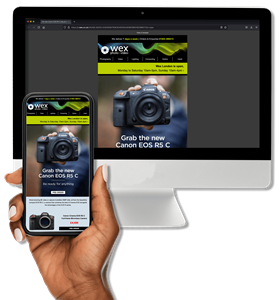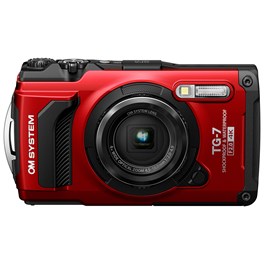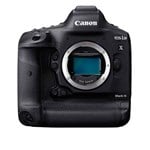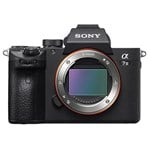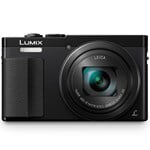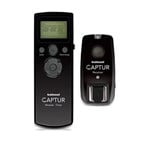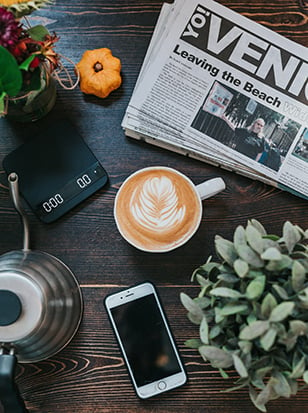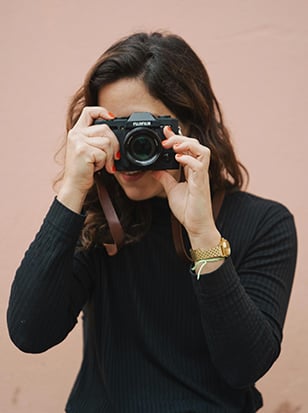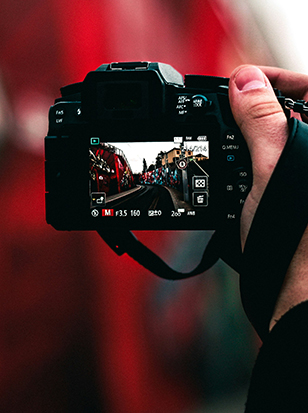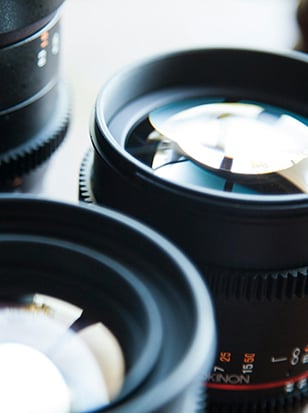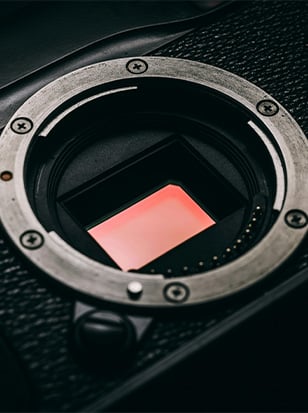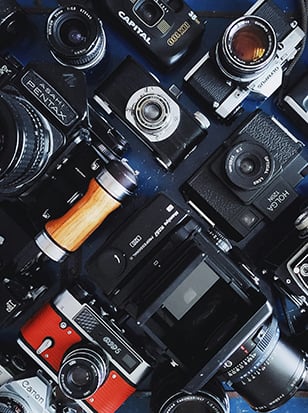
The best compact camera for festivals can help you come home with much more dynamic and beautiful images than you’d get with just your phone. The requirements of a festival camera are quite specific — ideally it should be small enough to fit in a pocket or bag, light enough to hold up one-handed, and should be a self-contained all-in-one package, as most festival-goers likely don’t want to mess around with changing lenses. As such, I’ve picked a range of slim, lightweight compact cameras, several of which I have brought to festivals myself in the past.
The key question to answer when picking your festival camera is: what are you more interested in capturing, acts or atmosphere? If you’re determined to get a clear image of Charli XCX or Mitski doing their thing on stage, then you’ll need a compact with a decent zoom lens. If you’re more concerned with capturing images of your friends, the crowd and the general vibe of the festival (or you’re the kind of well-organised freak who’s always at the barrier), then a compact with a fixed-focal-length lens may suit your purposes much better. I’ve included both kinds in this guide.
I’ve also added both digital and film cameras — since all of us have a digital camera in our pocket these days, many festival-goers prefer to capture their memories on film, taking advantage of the glorious colours of the likes of Kodak Gold to soak up the sunlight. Film cameras can be picked up for a lot less than digital, though of course, the film itself comes with ongoing costs.
Whether you’re heading to Glastonbury, Primavera, Download, Reading or whatever else, a great camera will help you capture unforgettable memories. Here are my top picks…
Best camera for festivals overall:
|
Pros:
Cons:
|
Sensor: 24.24 MP APS‑C CMOS (23.5 × 15.6 mm) Lens: 18.3 mm (≈28 mm full‑frame), f2.8–f16 Stabilisation: 3‑axis in‑body shake reduction Minimum Focus Distance: 6 cm in macro mode Weight: 257 g (incl. battery and card) |
This is, for my money, the best compact camera to take to a festival, a perfect choice for soaking up the atmosphere and producing high-quality images with bags of character. The Ricoh GR III is a lightweight digital compact that sports an APS-C sensor, which is significantly larger than any sensor you’d get in a smartphone. This means its image quality is going to hold up much better once light levels get low, allowing you to keep on shooting into the evening without producing images compromised by unappealing digital noise.
With a fixed 28mm focal length, the Ricoh GR III is more for capturing atmosphere than acts – though the large high-quality sensor means images are very tolerant to cropping without losing quality, to the point where there’s a decent digital zoom mode that works out to about 50mm. It’s a slim camera, easily light enough to be used one-handed and held up above a crowd, and a 3-axis built-in stabilisation mode helps to reduce blur from handheld camera-shake.
The Ricoh GR III produces sublime images, and offers a number of photographic picture profiles that allow you imbue your images with specific looks — Vivid, Bleach, High-Contrast B&W, that sort of thing. It’s super-easy to use, with an intuitive touchscreen interface, though be aware that it doesn’t have a viewfinder, so you’ll need to compose via the LCD screen. It takes SD memory cards, but also has 2GB of internal storage, so you might get away without one for a festival weekend.
This camera shares a lot of similarities with the hugely popular Fujifilm X100VI, another fixed-lens digital compact. However, the Ricoh GR III has two distinct advantages that make it my top pick for festivals. One, it’s less than two-thirds of the price of the X100VI. Two, you can actually get hold of one (the TikTok-driven popularity of the X100VI makes it very difficult to find stock).
It’s definitely an expensive option (and don’t worry, all the other cameras featured in this guide are cheaper), but I really believe based on my own experience that if you buy the Ricoh GR III for festival photography, you will not regret it.
Best zoom compact for festivals:
|
Pros:
Cons:
|
Sensor: 20 MP 1/2.3" BSI‑CMOS Lens: 24–720 mm equivalent, 30× optical zoom Stabilisation: 5‑axis HYBRID O.I.S.+ Video: 4K UHD at 30 fps Weight/Dimensions: 322 g (with battery & card); 112 × 67.8 × 43.1 mm |
If you would prefer a pocket-sized camera that can zoom in close enough to capture artists on stage at a festival, even when you’re not super-close, the Panasonic Lumix TZ99 is my recommendation. Its powerful zoom lens runs from equivalent 24mm to 720mm, which is very close indeed, and it also sports hybrid 5-axis optical image stabilisation that helps keep things steady even at the extreme end of the focal length. Capturing punchy images full of vibrancy, the TZ99 also benefits from Panasonic’s 4K Photo mode, which allows you to extract high-quality stills from 4K footage — effectively giving you a 30fps burst rate. Perfect for making sure you don’t miss the crucial moment.
A particularly useful feature for festivals is the TZ99’s on-the-go USB-C charging, which means you can power it up using the same power bank you’d use for your phone. This can be handy, as the 380-shot battery may not do the full day if you’re particularly snap-happy.
It uses a significantly smaller sensor than the Ricoh GR III, which does have an impact on image quality — when the light gets low, the TZ99 isn’t going to produce images that are as clean as the GR III. This is ultimately just a necessary trade-off for getting such a long zoom lens in a small, pocketable body.
Best wet-weather camera for festivals:
|
Pros:
Cons:
|
Sensor: 12 MP 1/2.33" BSI‑CMOS Lens: 25–100 mm equivalent, f2.0–4.9 with 4× optical zoom Durability: Waterproof 50 ft; shockproof 7 ft; crushproof 220 lb; freezeproof to –10 °C Video: 4K UHD recording Connectivity/Modes: Bluetooth/Wi‑Fi, Underwater modes, microscope mode, Pro Capture |
Look, as much as we’d love every festival we attend to be bathed in glorious sunshine, sometimes the fates do not conspire in our favour. Anyone who’s been to a wet festival will know how truly, truly wet and muddy you can get, and if you want a camera that’s going to come through this kind of situation without breaking, my recommendation is the OM System Tough TG-7. It’s a hardy digital compact designed for activities like snorkelling and surfing, with a tough outer shell that keeps it protected.
Put it this way — if you were standing in the muddiest pit of the rainiest Download in living memory, and you accidentally dropped the TG-7 into a puddle, and several people trod on it before you picked it back up, it would stand a decent chance of surviving, something you could not say for any other camera on this list.
Like the TZ99 it sports a zoom lens — only running to 100mm equivalent in this case, but that still stands you in good stead for getting on-stage close-ups, and like the TZ99, it also benefits from optical stabilisation to reduce blur from camera shake. Its sensor is again a 1/2.3-inch type, which will impact image quality in low light, but having a maximum aperture of F2 is a welcome help in this regard, letting in more light than the TZ99’s maximum aperture of F3.3.
Best film camera for festivals:
|
Pros:
Cons:
|
Film Format: Half‑frame 35 mm (17 × 24 mm exposures) Lens: 25 mm equivalent (≈37 mm full‑frame), f3.5, 3‑element HD coating Focus: Manual zone focus (6 zones from 0.25 m to infinity) Shutter: 1/350 s to 4 s, plus bulb mode Weight/Size: 290 g; 127 × 78 × 52 mm |
Film cameras, as mentioned, are hugely popular at festivals. You may want something a little more interesting and capable than a standard disposable — not to mention a bit less wasteful — and that’s where a simple compact like the Pentax 17 comes in. Though it takes standard 35mm film, it’s actually a half-frame camera, meaning it only exposes half of a standard frame at a time. This gives you double the number of shots: around 72 rather than around 36, or 48 rather than 24.
More sophisticated than a disposable or a cheap point-and-shoot, the Pentax 17 uses a zone focusing system that allows you to select the desired area of focus, and also boasts a high-quality lens that is treated with a multi-layer HD (High Definition) coating to deliver clear and sharp pictures. It’s easy to load and use, even if you’ve never shot film before, and the manual exposure compensation dial gives you some flexibility in tricky lighting situations, such as backlighting.
Best afforable film camera for festivals:
|
Pros:
Cons:
|
Film Format: Half‑frame 35 mm Lens: 22 mm f8 (f11 with flash), coated; 2 elements (1 glass, 1 acrylic) Shutter: Single speed 1/100 s; bulb mode Star Filter & Tripod Capable: Built‑in star filter; tripod thread included Size/Weight: 110 × 62 × 39 mm; 110 g |
Given that shooting on film represents an ongoing expense, you may want to consider a more affordable camera to save some cash for rolls and processing. The Kodak H35N is such a camera — it’s incredibly affordable, and can still produce great-looking images on 35mm film. Like the Pentax 17, it’s a half-frame camera, meaning you get twice as many shots from a roll in a slightly vertical format, rather than horizontal. Its lens isn’t made of the same kind of expertly treated glass as the Pentax, but, well, that’s why it’s about an eighth of the price.
You don’t have much control over your shots on the Kodak H35. Other than determining whether or not to trigger the flash, this is a real point-and-shoot situation. Given the wide fixed lens, it works best when you get as close to your subjects as possible — if you’re taking a photo of your friends, try to fill the frame with them and you’ll get better results. Also, be aware that the camera isn’t waterproof, and has quite a flimsy plastic construction; it’s not one to stand up to serious punishment, so take care with it.
Best instant camera for festivals:
|
Pros:
Cons:
|
Lens: Fixed‑focus polycarbonate 51.1 mm, aperture f9–42; 65° FOV Shutter Range: 1/300 s to 1 s Dimensions/Weight: 105 × 84 × 62 mm; 239 g (without film) Flash & Timer: Built‑in flash; self‑timer; double‑exposure mode Power & Materials: Internal rechargeable battery; 30 % recycled plastics |
Instant cameras are great fun at parties, and there’s no reason why you shouldn’t break one out at a festival too. While many are a little on the bulky side, the tiny Polaroid Go is perfectly proportioned for taking to a festival — and the upgraded Gen 2 version produces more accurate exposures for even better-looking images. It’s too small to take standard Polaroid I-Type film, so you need to make sure you get the dedicated Polaroid Go film, but once you’ve loaded it up, it’s point-and-shoot simplicity.
A built-in flash means you can keep capturing prints after the light gets low, but be aware that you get 16 per pack, and over the course of a fun day with many Moth cocktails imbibed, it’s all too easy to chew through your shots. One for picking your moments, unlike the likes of the half-frame Kodak H35, with which you can afford to be a little more profligate.

FAQs
What type of camera is best for festivals?
When you’re dancing from stage to stage, a camera that’s light and easy to carry makes all the difference. Go for something compact but capable in low light, so you can soak up the atmosphere and snap brilliant shots without lugging around heavy kit.
Do I really need good low-light performance for festival photos?
Definitely! Festivals often carry on long after the sun goes down. A camera that handles low light well – think a wide-aperture lens and solid high-ISO performance – will help you capture sharp, colourful photos without needing flash.
Is it worth getting a weather-sealed camera for festivals?
Absolutely. Between sudden downpours, drink splashes and dusty fields, festivals can be tough on your gear. A weather-sealed or splash-resistant camera means you can keep shooting without worrying about the odd shower or spill.
Should I pack a zoom lens or stick with a prime lens?
A zoom lens is usually the better shout for festivals; it lets you capture big crowd scenes and candid close-ups without swapping lenses mid-gig. If travelling light is a priority, a fast prime lens is a great alternative for crisp shots in tricky light.
What are the must-have features in a good festival camera?
Look for quick autofocus, solid battery life, built-in image stabilisation and good video quality. These features make it much easier to grab sharp photos, steady clips and spontaneous moments from the first set to the final encore.
How do we decide?
Our in-house photography experts, store staff and partners all work collaboratively to pour over our guides and tips articles. We also consider emerging trends and customer feedback to make sure our guides are always up-to-date and reflective of what people are truly looking for. By curating only the best products, our guides provide trustworthy recommendations, making it easier for customers to make informed choices with confidence.
If you would like more advice on any purchase our contact centre staff are here to help. Alternatively, you can reach us via email or social media. And don't forget. If you were to purchase anything based on our recommendations you'll be covered by our full returns policy
The Wex Blog
Sign up for our newsletter today!
- Subscribe for exclusive discounts and special offers
- Receive our monthly content roundups
- Get the latest news and know-how from our experts
